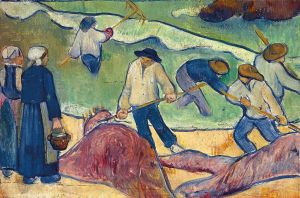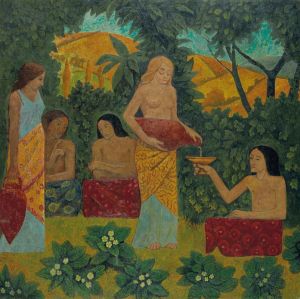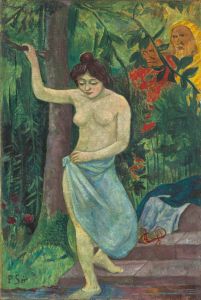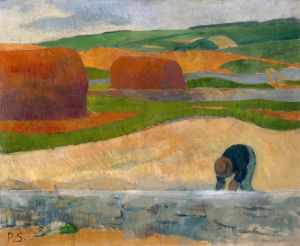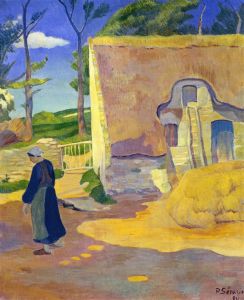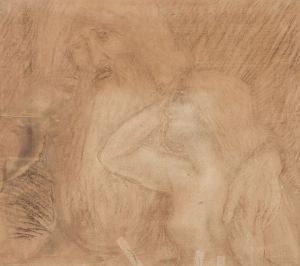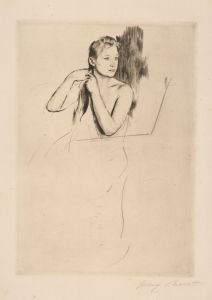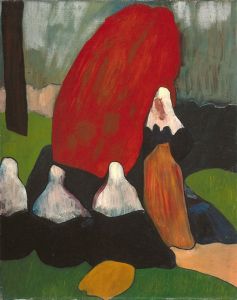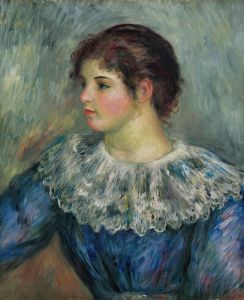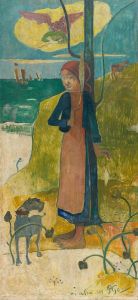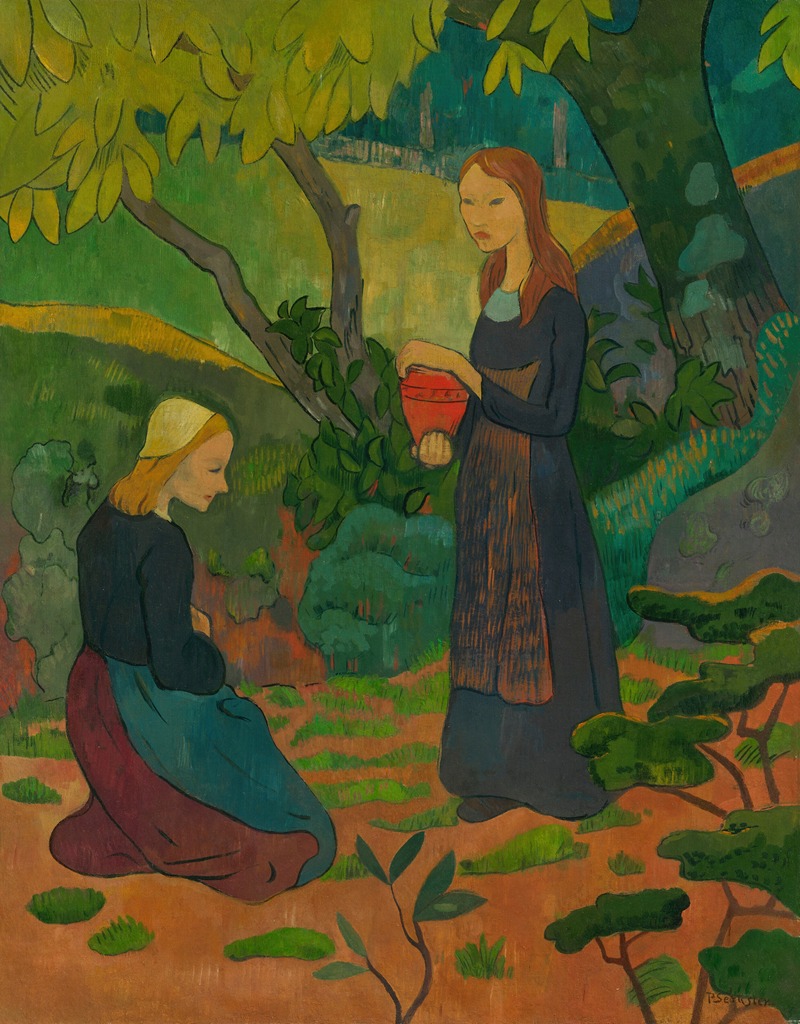
Jeune bretonne au pot vermillon et fillette agenouillée
A hand-painted replica of Paul Sérusier’s masterpiece Jeune bretonne au pot vermillon et fillette agenouillée, meticulously crafted by professional artists to capture the true essence of the original. Each piece is created with museum-quality canvas and rare mineral pigments, carefully painted by experienced artists with delicate brushstrokes and rich, layered colors to perfectly recreate the texture of the original artwork. Unlike machine-printed reproductions, this hand-painted version brings the painting to life, infused with the artist’s emotions and skill in every stroke. Whether for personal collection or home decoration, it instantly elevates the artistic atmosphere of any space.
Paul Sérusier was a French painter and a prominent figure in the Post-Impressionist movement. He is best known for his role in the formation of the Nabis group, a collective of avant-garde artists in the late 19th century. Sérusier's work often explored themes of symbolism and abstraction, and he was deeply influenced by the artistic innovations of his time.
"Jeune bretonne au pot vermillon et fillette agenouillée" is one of Sérusier's notable works, reflecting his interest in Breton culture and the use of bold colors and simplified forms. The painting's title, which translates to "Young Breton Woman with Vermilion Pot and Kneeling Girl," suggests a scene set in Brittany, a region in northwestern France known for its distinct cultural identity and picturesque landscapes. Sérusier frequently visited Brittany, particularly the village of Pont-Aven, which was a popular destination for artists seeking inspiration from its natural beauty and traditional way of life.
In this painting, Sérusier employs a vibrant color palette, with the vermilion pot serving as a focal point. The use of strong, flat colors and simplified shapes is characteristic of Sérusier's style and reflects the influence of Paul Gauguin, whom Sérusier met in Pont-Aven. Gauguin's approach to color and form had a profound impact on Sérusier, leading him to experiment with new techniques and ideas.
The composition of "Jeune bretonne au pot vermillon et fillette agenouillée" is carefully structured, with the figures arranged in a way that emphasizes their relationship to one another and to the surrounding space. The young Breton woman and the kneeling girl are depicted with a sense of calm and introspection, inviting viewers to contemplate the scene and its underlying meaning. This introspective quality is a hallmark of Sérusier's work, as he sought to convey not just the outward appearance of his subjects, but also their inner essence.
Sérusier's involvement with the Nabis group further shaped his artistic vision. The Nabis, whose name means "prophets" in Hebrew, were dedicated to exploring new ways of seeing and representing the world. They rejected the naturalism of Impressionism in favor of a more symbolic and spiritual approach to art. Sérusier's work during this period reflects these ideals, as he sought to create paintings that were not merely representations of reality, but expressions of deeper truths.
"Jeune bretonne au pot vermillon et fillette agenouillée" exemplifies Sérusier's commitment to these principles. The painting's use of color and form transcends mere depiction, inviting viewers to engage with the work on a more emotional and intellectual level. Sérusier's ability to convey complex ideas through simple, yet powerful imagery is a testament to his skill as an artist and his contribution to the development of modern art.
Throughout his career, Sérusier remained dedicated to exploring the possibilities of color and form, leaving a lasting impact on the art world. His work continues to be celebrated for its innovative approach and its ability to capture the essence of his subjects in a way that resonates with viewers. "Jeune bretonne au pot vermillon et fillette agenouillée" stands as a testament to Sérusier's artistic vision and his enduring legacy in the history of art.





